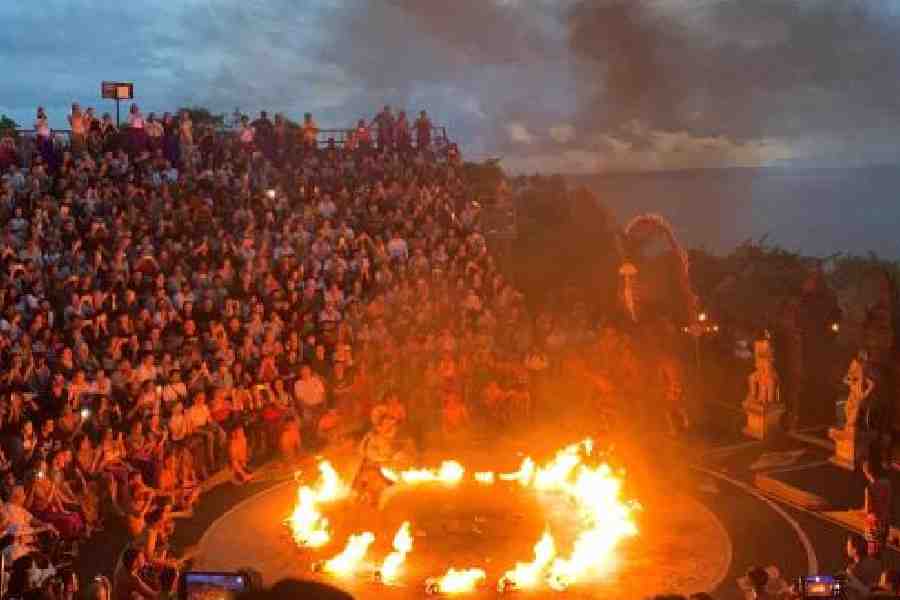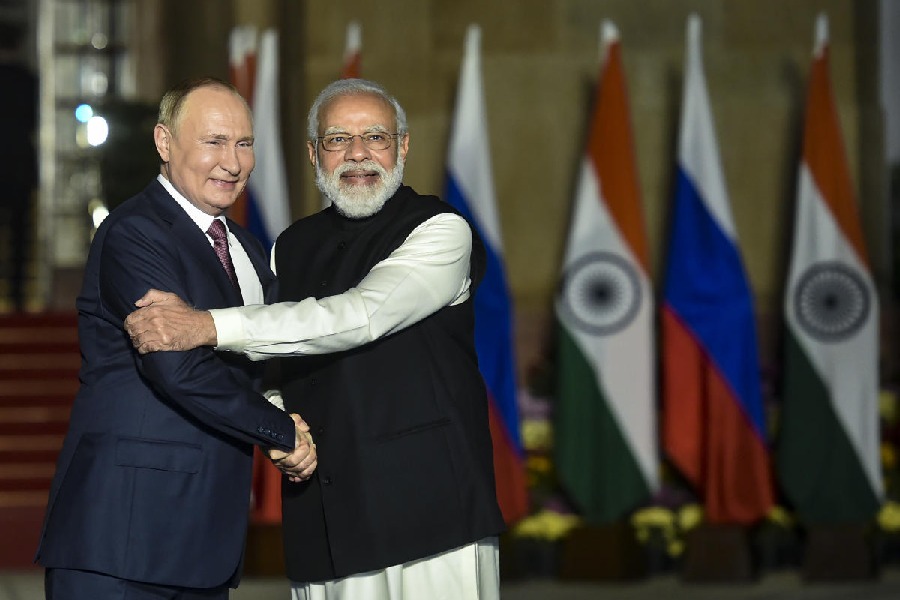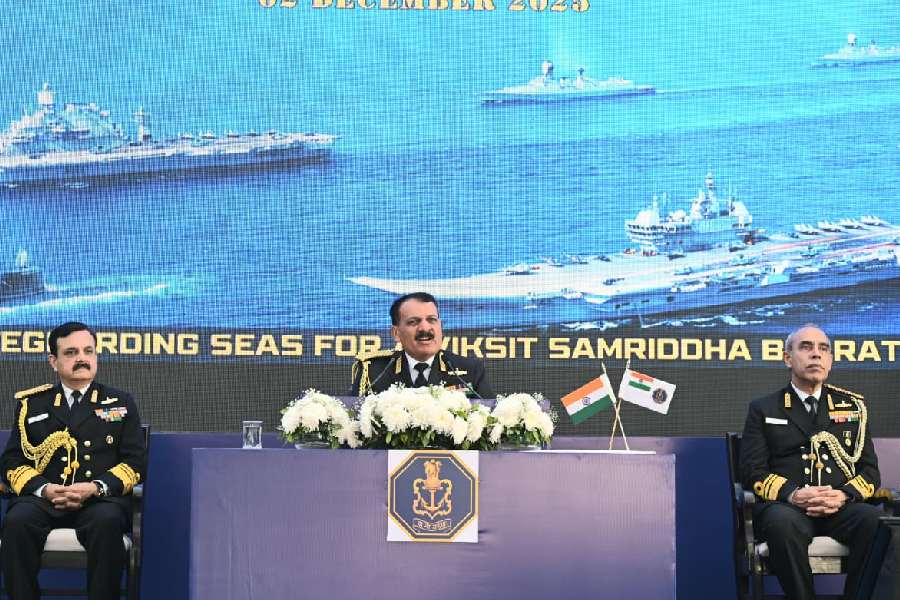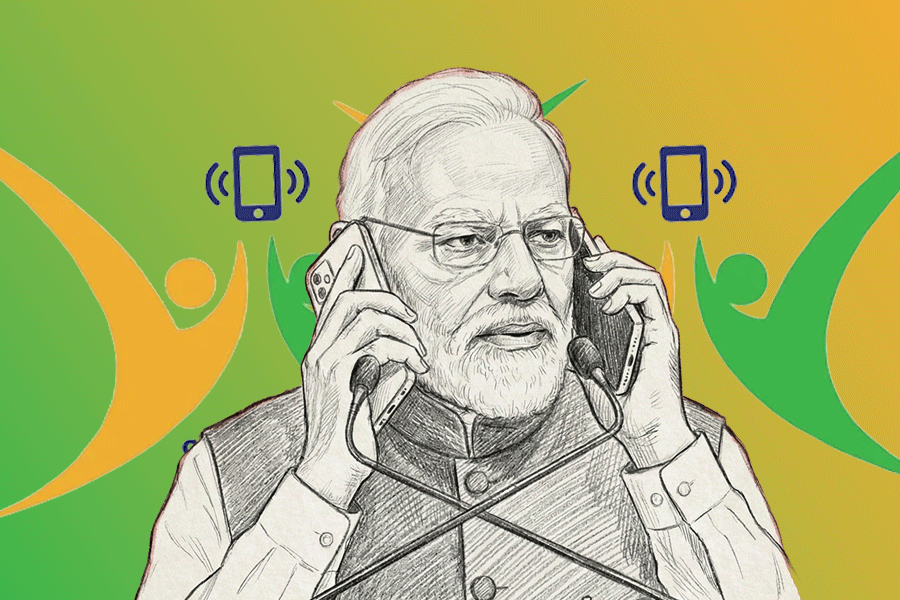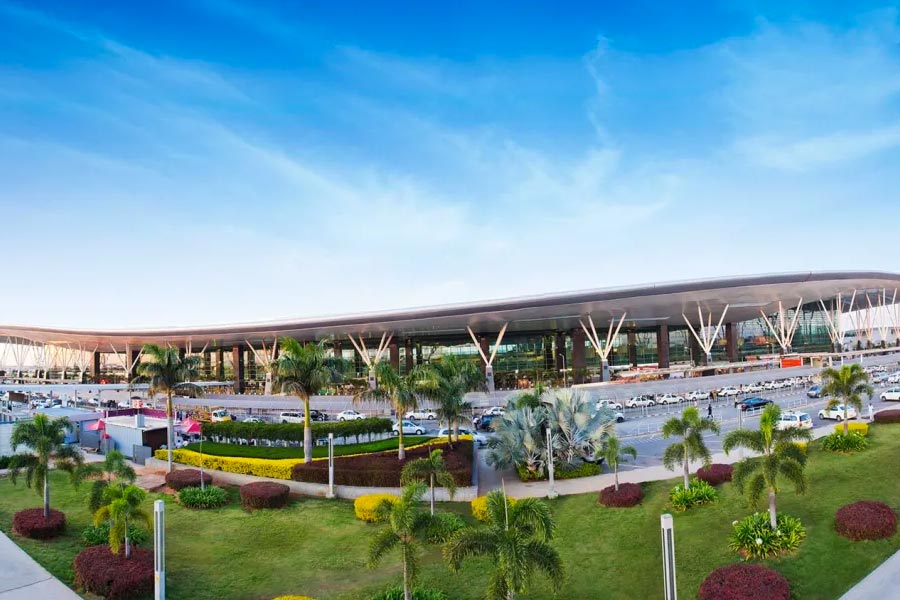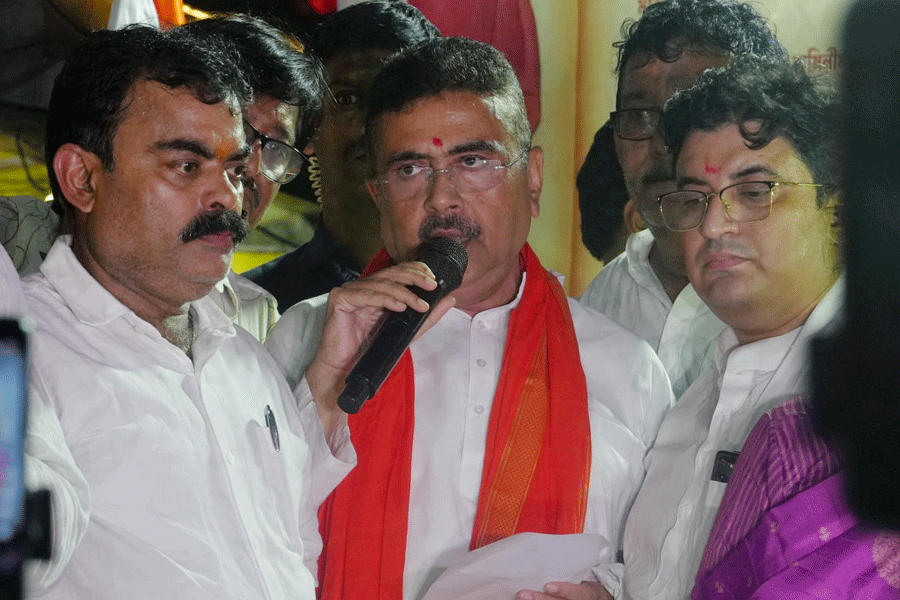Hanuman turned out to be a remarkably affable fellow. Every few minutes, the man playing the monkey god would take a break from the production of the Ramayana that was unfolding in front of our eyes, walk out of the makeshift proscenium with a few quick hops, settle himself amongst us — the audience — and begin to chat in Balinese. We had gathered in Uluwatu, a corner of Bali, where the land — a majestic rocky cliff — met a vast emerald sea to watch a Balinese production of the Ramayana. Unsurprisingly, the devotees could not understand a word of the divine chatter and merely nodded politely. Realising his mistake, the man-god switched to broken English, saying how nice it felt to spot a few Indians among the crowd. But before I or the handful of desis in the crowd could mutter “matur suksma” (“thank you” in Balinese), Hanuman, in one giant leap for man and simian kind, re-entered the stage, kicking great balls of fire that leapt up a few feet before tumbling down into the waves below. Lanka-kand, evidently, had begun.
Mercifully, the descent to Bali’s Denpasar airport had been free of such fiery turbulence. The trudge from the flight to immigration felt relatively short (Dear Heathrow, learn from Denpasar) and the official who stamped the passports even managed a smile or two; young pretty things with even broader smiles then took over, ushering bleary-eyed passengers to kiosks to change cash into the local currency or get a SIM card. Then, just as you were about to step out of the airport into a shining day filled with the — imagined — smell of ocean spray, you would, if you were Indian, have to stop and wonder.
For there stood a massive statue of someone who looked teasingly familiar — large eyes, a moustachioed face, with a Hulkish build. His identity was revealed a few minutes later, as one hopped into the cool comfort of a “Bluebird”, the fleet of fleet-wheeled taxis in Bali. The driver, on enquiring, said that the imposing statue is of none other than Bheem — albeit, given his height, Bada Bheem.
Indeed, a shared mythology could well be the proverbial crutch that helps visitors from India traverse the disciplined streets of Sanur or, say, Ubud, teeming not just with elegant kiosks selling trendy merchandise and twinkling bric-a-brac but also with restaurants, their air heavily scented with the aroma of seafood, steaks and Pad Thai noodles. En route to Tanah Lot, the spectacular site of another ancient seaside Hindu shrine, the driver and I got into a friendly banter on our preferred hierarchies for gods and goddesses. Hanuman and Jagannath — Bali has its own version of the rathayatra — are the coolest, he insisted. The Bengali sensibility in me rose like a trishul. “Dhush,” I exclaimed, “none betters the lady with 10 hands”. “Durga?” He exclaimed! “But isn’t her ladyship a bit too temperamental?” “Now you are confusing Durga with Kali,” I retorted. The two-hour journey to Tanah Lot seemed a lot shorter as we exchanged our personal notes on divinity.
Then, there are the other, familiar, rituals: for instance, the offering of the Canang Sari, delicately woven baskets made of bamboo or palm leaves, comprising incense, flowers, sweetmeats and so on, to propitiate the deities or the way in which the women light diyas in front of the small roadside temples even as yet another sultry day gives way to a cooler dusk.
A bit of this sense of belonging has historical and commercial antecedents. Trade facilitated Hinduism’s journey to Bali. Odisha, my neighbouring state, has kept alive the linkage in the form of the Bali Jatra festival. Every year, in October, Cuttack and some other parts of Odisha participate, with great energy, in a ritualistic bon voyage that is meant to honour ancient maritime links between the two lands. But the bond is not only mercenary in nature. Bali is also ancient India’s cultural twin: the Balinese alphabet system, to cite one example, is a descendant of the Brahmi script; Indonesians of Tamilian origin are to be found in northern Sumatra. Interestingly, their presence was facilitated by Rajaraja Chola’s decimation of the Srivijaya empire, possibly the earliest instance of the “Look East policy”, albeit in military fatigues. We are also joined at the hip, so to speak, by the spectre of colonialism. The imposing and ornate Bajra Sidhara, a monument dedicated to all the Balinese people who fought the Dutch colonialists, dominates one of Denpasar’spublic spaces.
Mind you, all of this — the pronounced Hindu character and rituals of Bali, the preservation of its temples, the acknowledgement of Indic roots in language and so on — has been accorded a pride of place in a nation that has the world’s largest Muslim population. Not for once did Bali’s gods or mortals, be it the loquacious Hanuman or a local, complain of obvious discrimination. Neither did I experience any.
Strolling by Sanur’s quiet beaches, watching the lighthouse flash its solitary speck of luminescence, I would often wonder whether my enchantment with Indonesia’s seemingly intact pluralism was, in fact, an inner, complicated despair with the land that I love and call home turning fissiparous in recent times.
Soon, despair would give way to further enchantment. One of the reasons why the Bengali in me could not get enough of Bali was Pintu! In Indonesian, this ubiquitous Bangali dak-naam signifies a door or a portal of sorts. I am thankful to pintu to have led me to the isles that have mastered the art of balancing myth and modernity.

